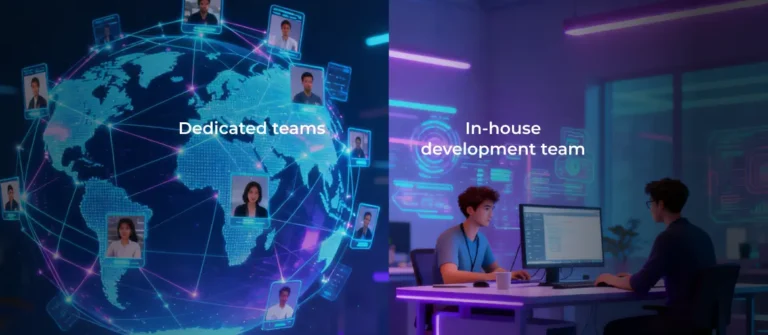


To build and manage a dedicated software team effectively, you first have to understand why companies struggle in the first place. They rarely fail because of a lack of ideas; they fail because they can’t execute on them fast enough. Roadmaps slip not due to poor planning, but because critical

In 2025, AgileEngine was recognized by three independent organizations that look at thousands of companies worldwide. Clutch named us a Fall Global Winner, TechReviewer ranked us among the Top 100+ Software Development Companies, and Business Success Magazine selected us as the Best Remote/Hybrid Tech Workplace. TechReviewer even included us on

The talent market entering 2025 is defined by two parallel forces: the explosive rise of AI-driven roles and a growing insistence from companies to “hire right, not fast.” As organizations accelerate their adoption of advanced data capabilities, they are encountering unprecedented pressures — from intensifying competition for senior specialists to a widening gap between the roles companies think they need and the skills the market can actually supply.

In recent months, AI has been making headlines as the next major driver of productivity and cost savings. While intelligent automation holds enormous promise for boosting business performance, companies continue to rely on proven approaches — like outsourcing software development and design — to strengthen their digital initiatives. This reliance

Picture this: you’re Nick Fury assembling the Avengers. You need Iron Man’s cutting-edge tech expertise, Captain America’s strategic leadership, and Bruce Banner’s specialized scientific knowledge — all working together to save the world (or in your case, launch your product). But here’s the catch: do you hire each superhero full-time

Knowing how to choose a software development partner has become a critical business skill. A strong tech partnership goes beyond short-term delivery — it creates a lasting operational advantage. The right software development partner extends your engineering capability, stabilizes delivery, and provides access to specialized skills exactly when you need

If your line of work involves building software products, you’ve likely faced familiar challenges — long hiring cycles, escalating costs, or difficulty attracting and retaining top engineering talent. Many technology leaders have discovered an effective way to overcome these barriers: hiring remote developers through staff augmentation. In fact, more than

Picture this: your biggest enterprise client just reported a production issue. You need immediate support — but your offshore team’s day hasn’t started yet. If you had nearshore software experts, that ticket would already be resolved, your client reassured, and your SLA intact. For many companies, this scenario is a

Imagine your company just secured $500,000 to build an AI solution that will transform your customer service operations. The data science consultants are pitching “deep learning neural networks with transformer architecture.” It sounds impressive, but you’re wondering: do we actually need that level of complexity, or would a simpler machine

A clear view of the software development cost breakdown for 2025 is key for leaders planning technology budgets and long-term product strategy. From architecture choices to AI integration, each decision reshapes both cost and value. Companies using services like AgileEngine’s AI Studio already see how automation can accelerate delivery and